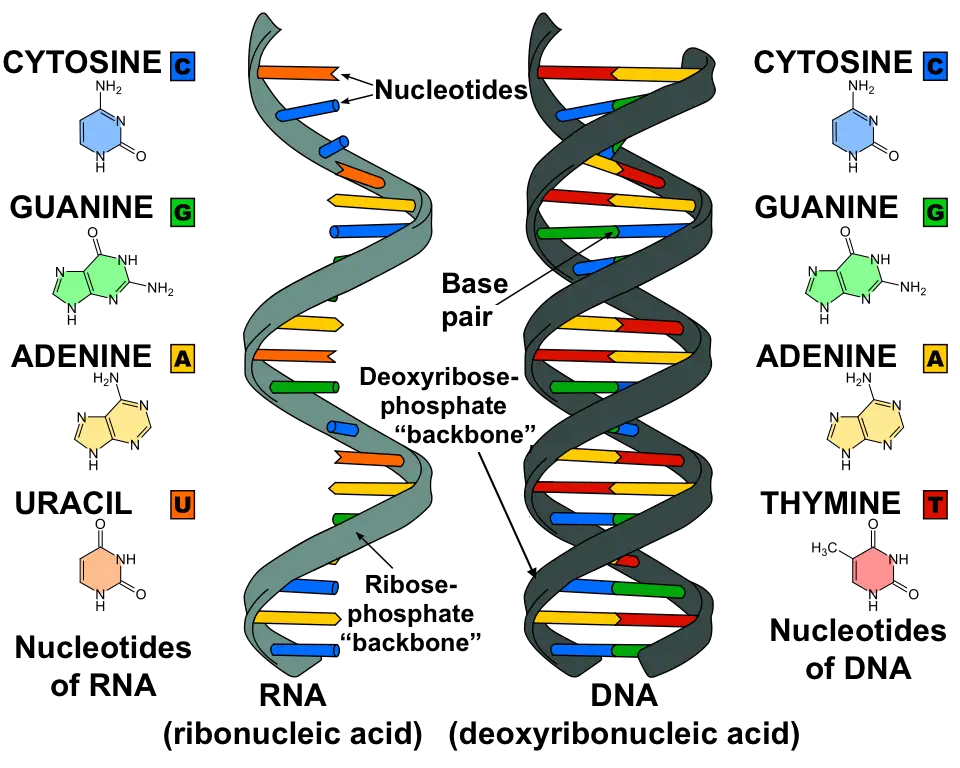What is the full form of RNA?
RNA full Form is Ribonucleic Acid. RNA is one of the two essential nucleic acids in a cell, the other being DNA (deoxyribonucleic acid). According to the theory of RNA, it is the first genetic material from which the genetic code was extracted and from which the earliest forms of life originated. RNA is an autonomously replicating molecule. Simply put, RNA is the precursor to all forms of life that exist in the world today.
Read Other Full Forms

Structure of RNA
The structure of RNA is explained briefly below.
RNA consists of phosphoric acid, pentose sugar, and nitrogen-containing cyclic bases.
RNA contains -D-ribose as the sugar moiety. RNA contains four heterocyclic bases: Guanine (G), Adenine (A), Cytosine (C), and Uracil (U). RNA’s fourth base differs from that of DNA’s.
The primary RNA building blocks are adenine and uracil, which form base pairs with the aid of two hydrogen bonds.
The RNA consists primarily of a single strand that occasionally folds back on itself.
RNA has a hairpin structure, and similar to DNA, nucleotides are produced in this ribonucleic substance (RNA). Nucleosides are similar to phosphate groups, which aid in the synthesis of nucleotides in DNA.
Various types of RNA
There are various types of RNA, the most well-known and studied of which in the human body are:
- tRNA (Transfer RNA) (Transfer RNA)
The transfer RNA is responsible for identifying the protein or amino acids that the ribosomes need in order to function. It is found at the terminal ends of each amino acid. It is also known as soluble RNA and serves as a bridge between amino acids and messenger RNA.
- mRNA (Messenger RNA) As its name suggests, mRNA is responsible for transporting genetic material to ribosomes and determining the type of protein required by the body. This is also referred to as messenger RNA. m-RNA is typically utilized in the transcription and protein synthesis processes.
- rRNA (Ribosomal RNA) is the ribosome component found in a cell’s cytoplasm, where ribosomes are located. Ribosomal RNA is essential for all living organisms to synthesize and translate mRNA into proteins. The rRNA is composed primarily of cellular RNA and is the most abundant RNA in the cells of all life forms.
Primary functions of RNA
The essential RNA functions are listed below.
- Enables faster DNA to protein translation.
- Acts as an adaptor molecule for protein synthesis.
- RNA acts as a messenger between ribosomes and DNA.
- RNA serves as the genetic material’s carrier in all living organisms.
- Encourages the ribosomes to choose the amino acid required for protein synthesis.

